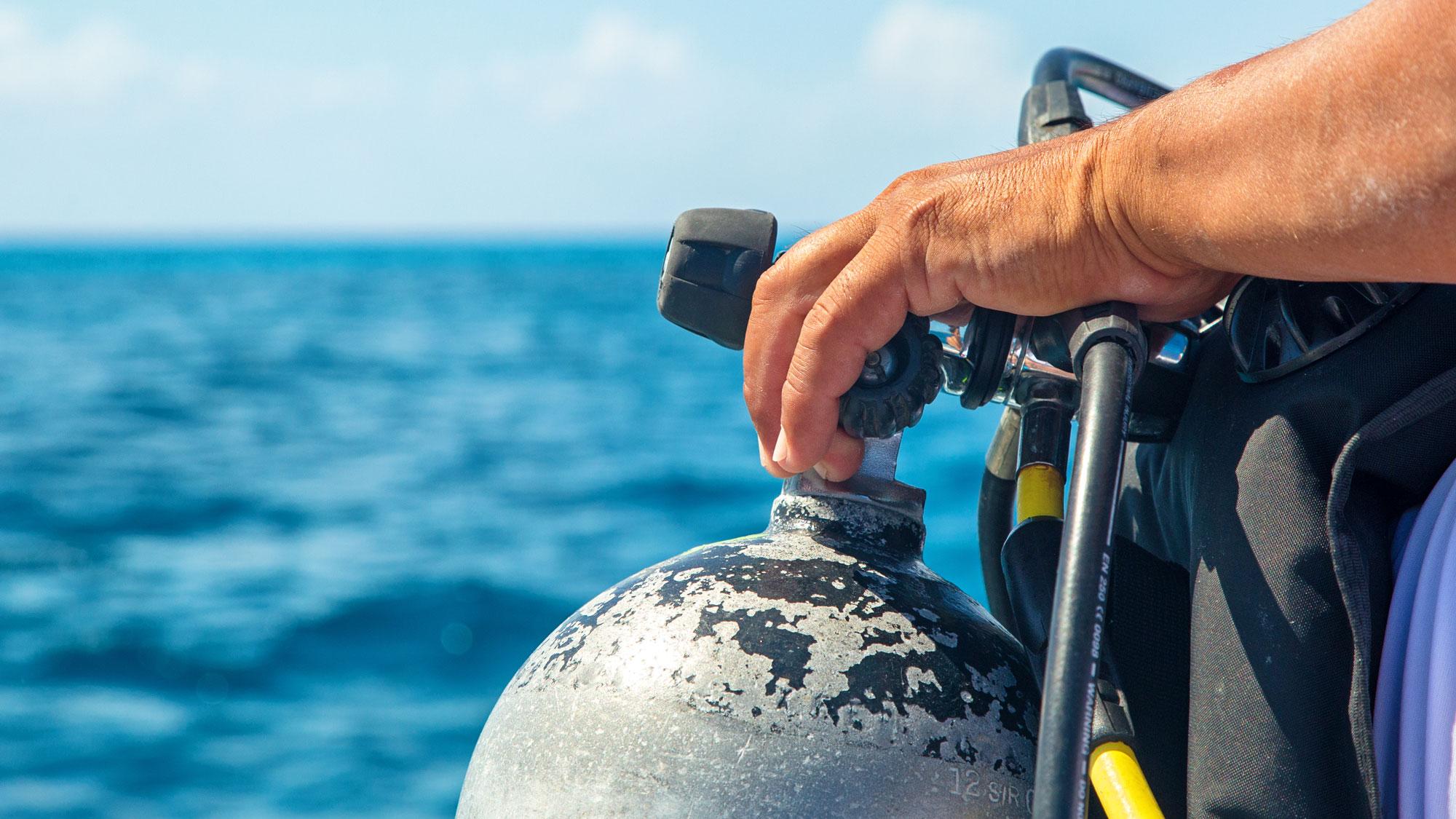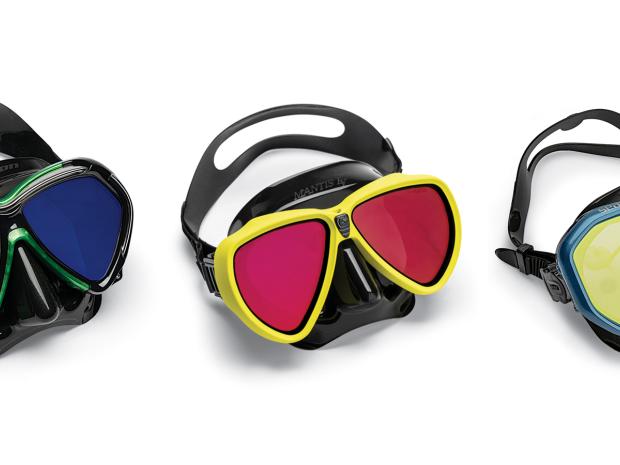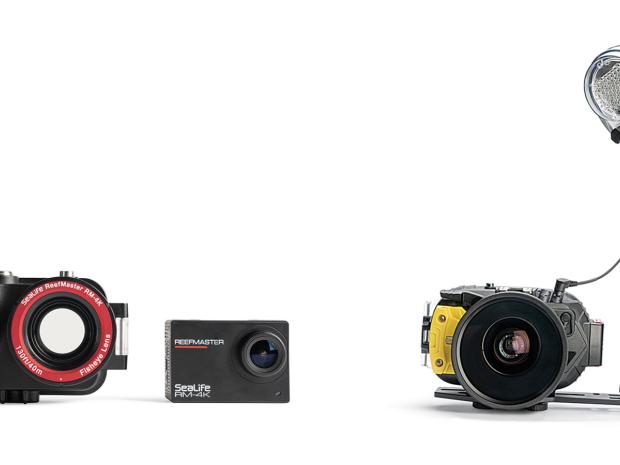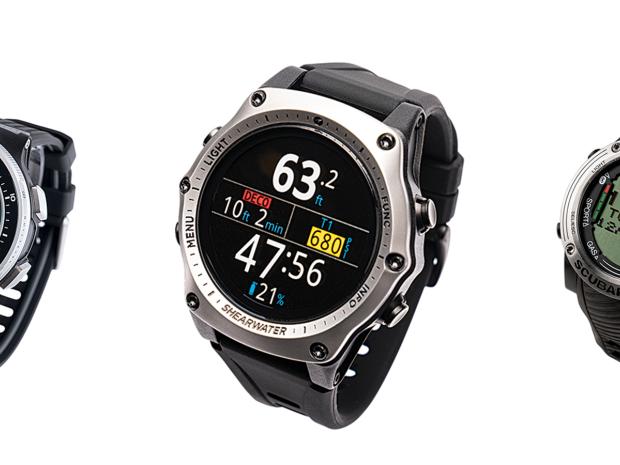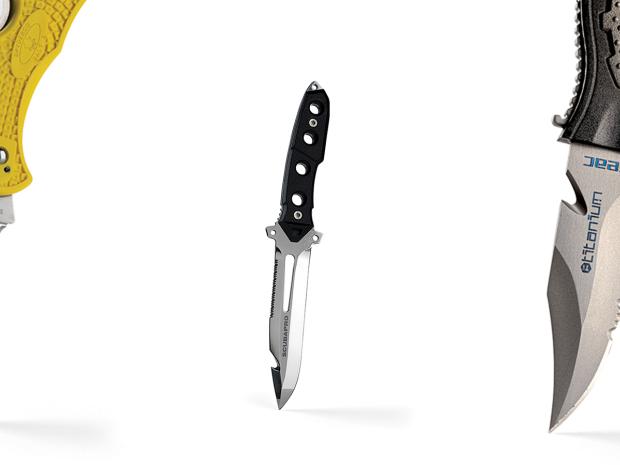Murphy’s Law definitely applies to scuba diving gear: What can go wrong, will — and often at the worst time, typically that long-anticipated moment when you’re just about to giant-stride into the dive of your life at your most exotic bucket-list destination. Your mask strap snaps. An O-ring pops. Your fin strap gives up. That’s why the savvy carry a treasure chest of spare parts, backup gear, and repurposed household goods that would make any hoarder proud. The save-a-dive kit can do just that — if properly outfitted.
“Self-reliance is key in and out of the water,” says California-based Lowell O’Rourke, a master scuba diver trainer and specialty instructor who has captained liveaboards across the globe. “A proper save-a-dive kit will keep you diving through most equipment problems.”
“Thoroughly examining your equipment prior to a dive can lessen the likelihood of issues,” says master instructor and law-enforcement diver Woody Tinsley of Boston. That said, he cautions, “ O-rings seem to have a mind of their own, and it’s not uncommon for mask or fin straps to break from wear and tear.”
“My job is to take people around the world on underwater photo safaris,” says Berkley White, professional photographer and owner of Backscatter Underwater Video and Photo in Monterey, California. “There is nothing worse than when a guest experiences a failure in the field. While I try to predict items commonly forgotten, I quite frequently have to resort to MacGyver solutions in the field.”
These pros have done and seen heaps when it comes to equipment malfunction. So take their advice.
SAVE-A-DIVE KIT BASICS
Every diver’s kit looks a little different depending on the kind of diving you're doing, but here are some of the most commonly found items:
- O-rings
- Mask
- Water resistant super glue/epoxy
- Fin straps
- Mask straps
- First aid kit
- Dive light batteries
- Small tools like pliers to help with repairs
EXPECT NOTHING, PLAN FOR EVERYTHING
“It seems that you need something from your kit most when you don’t have it,” White says. “Some items in my kit have bounced around for years without use, but once you’ve turned an emergency into a success story, you tend to keep the same items in there. Some of them have just become good-luck tokens.”
The highlights of White’s go-to photographer’s kit: 1 pound of bolts, nuts and washers in common metric and standard sizes, fast-cure superglue and epoxy, high-quality gaffer tape (“duct tape sucks”), 20 feet of paracord, 1-inch bundle of mixed-length zip ties, hole reamer, micro tweezers, battery-powered soldering iron and solder, and fiberglass contact scratch brush.
“As an instructor,” says Boston’s Tinsley, “I have enough spare parts to fix most minor problems, and I personally take an entire spare regulator with me, along with straps for numerous types of fins and masks, O-rings, lubricant, plugs, wrenches, a spare pocket mask, batteries of various sizes, a bag with a wax candle for zipper care (keep it in a bag since it can melt in the heat), some nylon webbing, and zip ties, zip ties and more zip ties.”
“Build a save-a-dive kit that will accommodate your gear,” says Keith Nichols, an open-water instructor, public safety diver, and owner of Pink Ink Scuba in Tamassee, South Carolina. “Ask your local dive shop what they recommend for your gear, and look at what your instructor, divemaster or buddies carry in their kits.”
"Not all tools are meant for scuba diving,” he adds, “so buying tools specifically made for save-a-dive kits will eliminate rot and rust buildup."
WHAT YOU MIGHT NOT CONSIDER
“Baggage fees have everyone fretting about going over weight,” says White. “Traveling light is cool, but saving a few hundred dollars in excess baggage on a trip of a lifetime is silly when you’re missing a key part. Spend a few extra bucks to make sure you have all the tools and toys you’ll need.”
“I keep my personal kit in a toolbox, and it’s pretty organized,” Tinsley says. “I have seen people keep them in zip folders, Tupperware containers, and plastic tubes, but if you want to be really cool, you can wear it in a fanny pack.”
“When you realize a need that you don’t have in your kit, buy two,” says Nichols. “And remember to restock items after you use them.”
THE WEIRD AND THE WONDERFUL
“Sometimes you experience a camera housing that has an unidentifiable leak, so I keep a handful of tampons on hand and place them in the bottom of a system — phenomenal technology,” White says. “I’m no expert on the subject, but the brand OB seems to offer minimal packaging, and sizes that fit the tight spaces of modern housings, or you can use pads in larger housings, but remember to place them sticky side up for the best action. These also double as a great first-aid item for a major wound. However, as I experienced, you might need help getting the cellophane wrapper off in an emergency.”
“I’ve seen some really original ways to carry extra O-rings,” says Tinsley. “Some divemasters wear them as toe rings, and I personally put a couple on the strap of my dive computer so I always have them.”
“When you’re traveling abroad, having an oxygen analyzer that you know is reliable really doesn’t hurt,” says O’Rourke. “And it can be a great trade item in remote locations that don’t have access to such equipment readily.”
ALL FOR ONE AND ONE FOR ALL
“My kit helps me all the time, but I only notice it when I save someone else’s dive,” White says. “It feels great to help someone’s dive, and saving someone usually means the dive will continue without further delays. My kit is packed for me, but ultimately it’s packed for everyone else too.”
“I remember as a new diver, I bought a ready-made save-a-dive kit from my dive shop for $9.99,” says Tinsley. “It had a generic mask strap, fin strap, a few O-rings and some silicone. I threw it in my dive bag, and one day on the boat, another diver had broken his mask strap. That guy was so desperate, I could have sold my strap for $100, but I ended up just giving it to him.”
“I see divers make a mistake by using small, minimalist kits,” says O’Rourke. “Having more than you need is OK. If you do not have enough space, team up with your buddy to create a kit between the team. Don’t have to say to yourself, ‘I should have brought…’”
SOME GEAR TO GET YOU STARTED
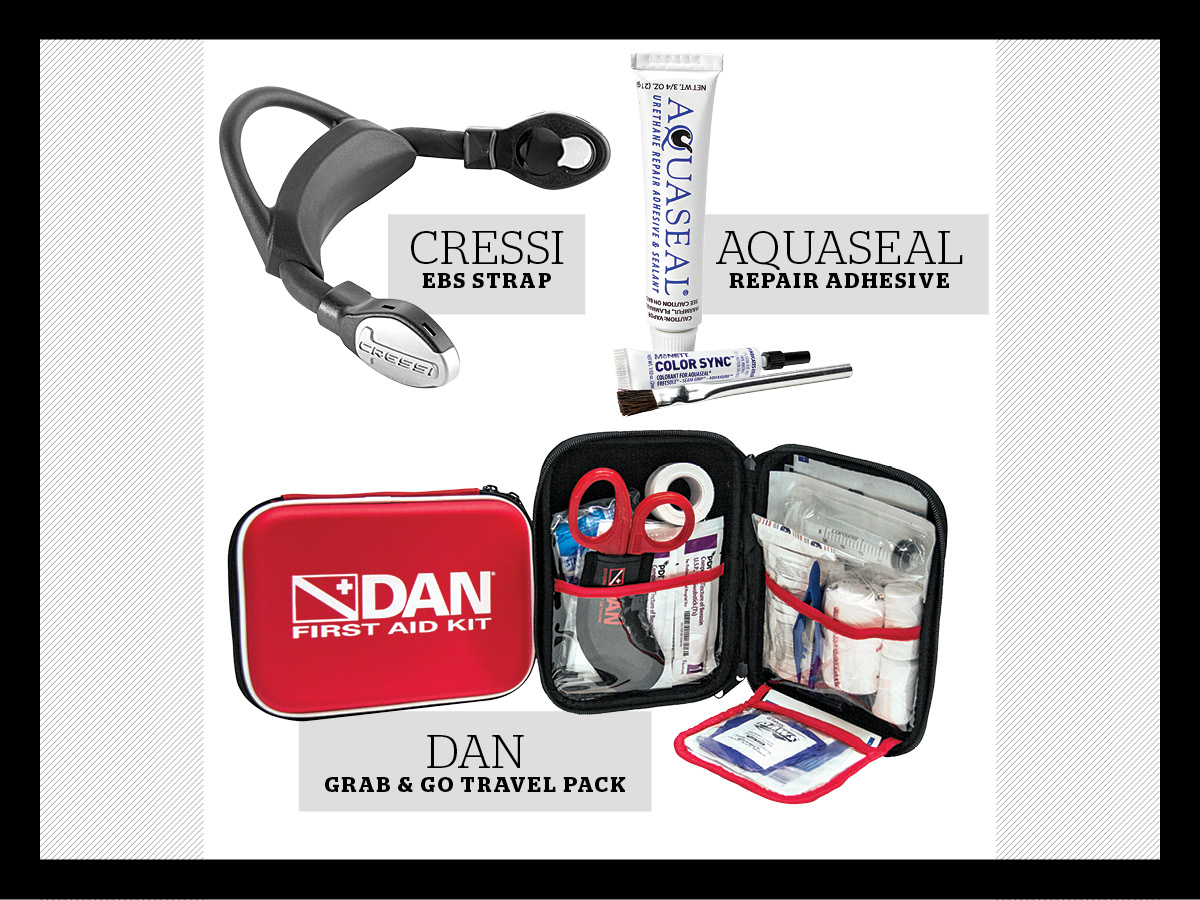
Courtesy Cress, Jon Whittle, Courtesy DAN
Cressi EBS Strap
Price: $34.95 | Info: cressi.com
This user-friendly bungee strap can replace traditional adjustable straps on most Cressi scuba diving fins, as well as many other brands. Made from durable materials, the strap never needs adjusting and can accommodate a range of foot sizes.
Aquaseal Repair Adhesive
Price: $7.95 (.75 oz) | Info: gearaid.com
For emergency wetsuit repair, this clear, waterproof sealant can handle many types of neoprene field surgery to keep divers wet. It’s flexible, to maintain stretch for comfort, and it dries quickly, so nobody has to wait for you to drop.
Dan Grab & Go Travel Pack
Price: $20 | Info: diversalertnetwork.org
This compact first-aid kit from Divers Alert Network covers most of your bases when things go wrong, including sting-relief wipes, antiseptic towelettes, folding scissors, and multiple dressings and wound-care supplies. And it stows neatly in a tough nylon bag with internal waterproof zipper pockets.





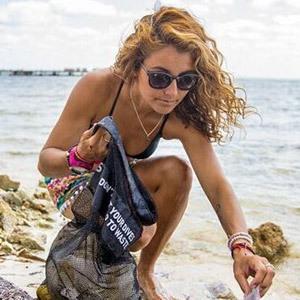

 Marine Debris
Marine Debris
 Shark & Ray Protection
Shark & Ray Protection
 Adopt The Blue
Adopt The Blue













